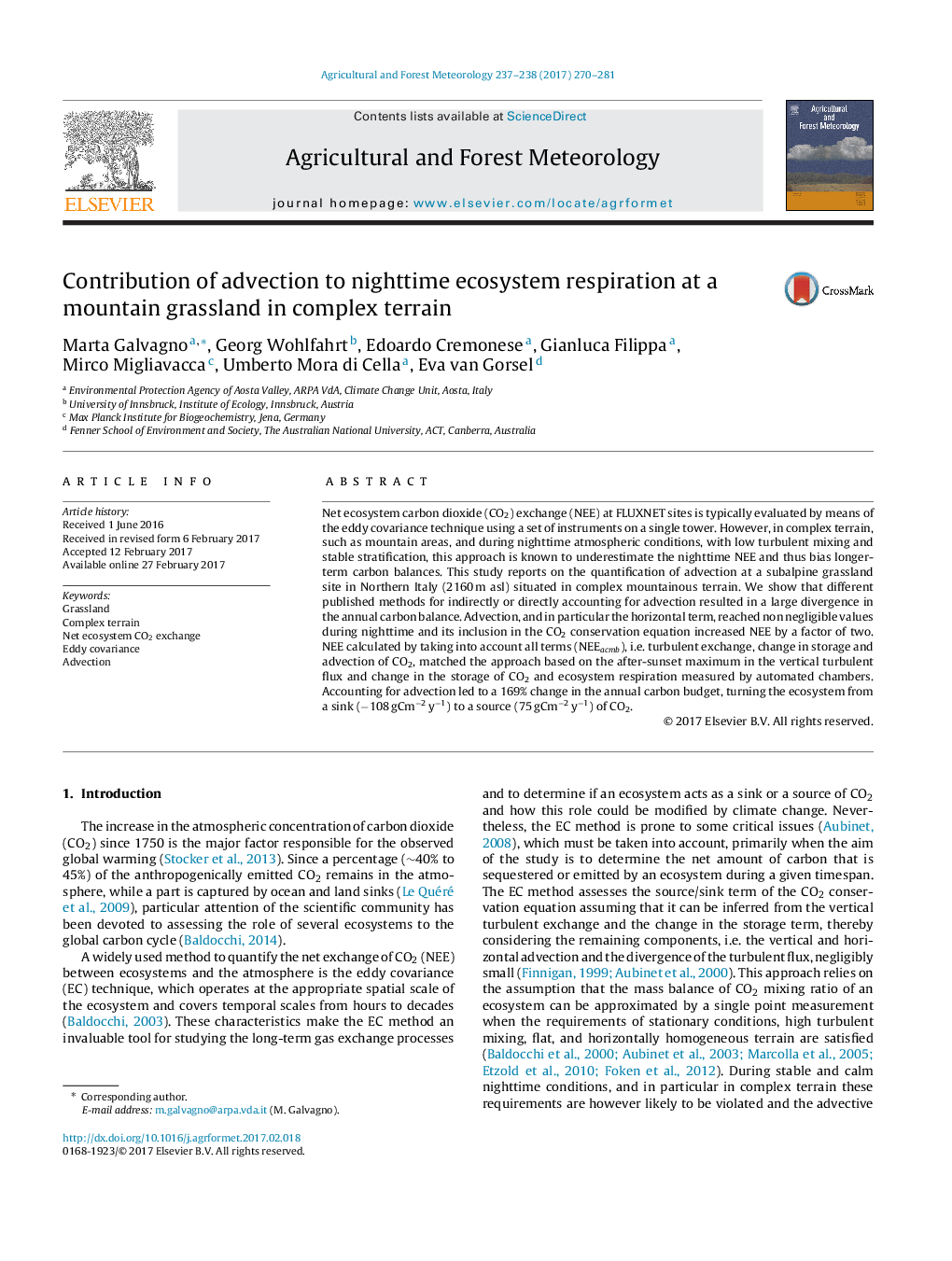| کد مقاله | کد نشریه | سال انتشار | مقاله انگلیسی | نسخه تمام متن |
|---|---|---|---|---|
| 6457932 | 1420861 | 2017 | 12 صفحه PDF | دانلود رایگان |
- Nighttime advection of CO2 in a mountain grassland was not negligible.
- Including advection in NEE calculation increased estimates of nighttime respiration.
- Different NEE calculation methods resulted in a large divergence in the annual carbon balance.
- Accounting for advection turned the ecosystem from a sink to a source of CO2.
Net ecosystem carbon dioxide (CO2) exchange (NEE) at FLUXNET sites is typically evaluated by means of the eddy covariance technique using a set of instruments on a single tower. However, in complex terrain, such as mountain areas, and during nighttime atmospheric conditions, with low turbulent mixing and stable stratification, this approach is known to underestimate the nighttime NEE and thus bias longer-term carbon balances. This study reports on the quantification of advection at a subalpine grassland site in Northern Italy (2160Â m asl) situated in complex mountainous terrain. We show that different published methods for indirectly or directly accounting for advection resulted in a large divergence in the annual carbon balance. Advection, and in particular the horizontal term, reached non negligible values during nighttime and its inclusion in the CO2 conservation equation increased NEE by a factor of two. NEE calculated by taking into account all terms (NEEacmb), i.e. turbulent exchange, change in storage and advection of CO2, matched the approach based on the after-sunset maximum in the vertical turbulent flux and change in the storage of CO2 and ecosystem respiration measured by automated chambers. Accounting for advection led to a 169% change in the annual carbon budget, turning the ecosystem from a sink (â108Â gCmâ2Â yâ1) to a source (75Â gCmâ2Â yâ1) of CO2.
Journal: Agricultural and Forest Meteorology - Volumes 237â238, 1 May 2017, Pages 270-281
